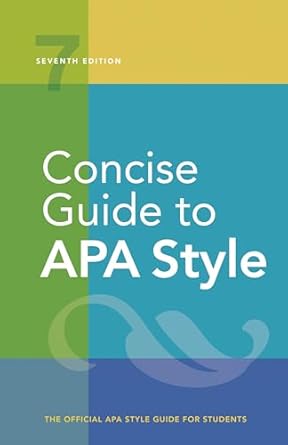[toc]
mastering quotations apa style guide for students
Concise Guide to APA Style: 7th Edition (OFFICIAL)
Page 218 Review
Understanding Quotations: A Deep Dive into Academic Writing
In academic writing, the effective use of quotations is crucial for supporting arguments, providing evidence, and engaging with existing scholarship.
This analysis delves into the guidelines for incorporating quotations, focusing on the distinction between short and block quotations, as outlined in academic style manuals.
Short Quotations: Integrating Voices Seamlessly
Short quotations, defined as those containing fewer than 40 words, are integrated directly into the text and enclosed within double quotation marks.
The key principle here is seamless integration, ensuring that the quotation flows naturally within the surrounding sentences.
As the text emphasizes:
“If a quotation consists of fewer than 40 words, treat it as a short quotation: Incorporate it into the text and enclose it within double quotation marks.
For a direct quotation, always include a full citation (parenthetical or narrative) in the same sentence as the quotation.”
This directive highlights the importance of providing context and attribution for all quoted material.
The citation, whether parenthetical or narrative, is essential for giving credit to the original author and allowing readers to locate the source.
The text further elaborates on citation placement:
“Place a parenthetical citation either immediately after the quotation or at the end of the sentence.
For a narrative citation, include the author and year in the sentence and then place the page number or other location information in parentheses after the quotation; if the quotation precedes the narrative citation, put the page number or location information after the year and a comma.”
This detailed guidance ensures clarity and consistency in citation practices.
Whether the citation appears immediately after the quotation or at the end of the sentence, the essential elements of author, year, and page number must be present.
Consistency in following these guidelines enhances the credibility of the writing.
Punctuation Matters: Fine-Tuning the Details
The text also provides specific instructions regarding punctuation:
“If the citation appears at the end of a sentence, put the end punctuation after the closing parenthesis for the citation.
If the quotation includes citations, see Section 8.32; if the quotation includes material already in quotation marks, see Section 8.33.
Place periods and commas within closing single or double quotation marks.
Place other punctuation marks inside quotation marks only when they are part of the quoted material.”
These nuances are critical for maintaining accuracy and professionalism in academic writing.
Paying attention to these details demonstrates respect for the original source and enhances the clarity of the presentation.
Block Quotations: Presenting Lengthy Passages
For quotations that exceed 40 words, the format shifts to a block quotation.
This format distinguishes the quoted material from the surrounding text, making it visually distinct.
The text specifies:
“If a quotation contains 40 words or more, treat it as a block quotation.
Do not use quotation marks to enclose a block quotation.
Start a block quotation on a new line and indent the whole block 0.5 in. from the left margin.”
The absence of quotation marks in a block quotation underscores its visual separation from the main text.
The indentation further emphasizes this distinction, signaling to the reader that the following passage is a direct excerpt from another source.
Additional formatting guidelines are provided for block quotations with multiple paragraphs:
“If there are additional paragraphs within the quotation, indent the first line of each subsequent paragraph an additional 0.5 in.
Double-space the entire block quotation; do not add extra space before or after it.”
These specific formatting rules ensure that the block quotation remains visually distinct and adheres to academic standards.
Double-spacing and additional indentation for subsequent paragraphs contribute to the overall readability and clarity of the passage.
Citing Block Quotations: Providing Attribution
The text concludes with guidance on citing block quotations:
“Either (a) cite the source in parentheses after the quotation’s final punctuation or (b) cite the author and year in the narrative before the quotation and place only the page number or other location information in parentheses after the quotation.”
This flexibility in citation styles allows writers to choose the method that best suits their narrative.
Whether the citation appears after the quotation or is integrated into the preceding sentence, the essential elements of author, year, and page number must be clearly presented.
Conclusion
Mastering the art of incorporating quotations is essential for academic writing.
By adhering to the guidelines for short and block quotations, and by paying careful attention to citation and punctuation, writers can effectively engage with existing scholarship, support their arguments, and enhance the credibility of their work.
The guidelines outlined in this analysis provide a foundation for clear, accurate, and professional academic writing.
Buy full ebook for only $18: https://www.lulu.com/shop/american-psychological-association/concise-guide-to-apa-style-7th-edition-official/ebook/product-rmzpq54.html?page=1&pageSize=4
Mastering Quotations Apa Style Guide For Students
Read more: Citation & Plagiarism: A Guide to Academic Integrity

